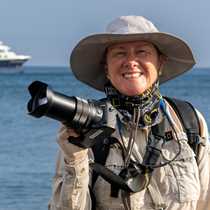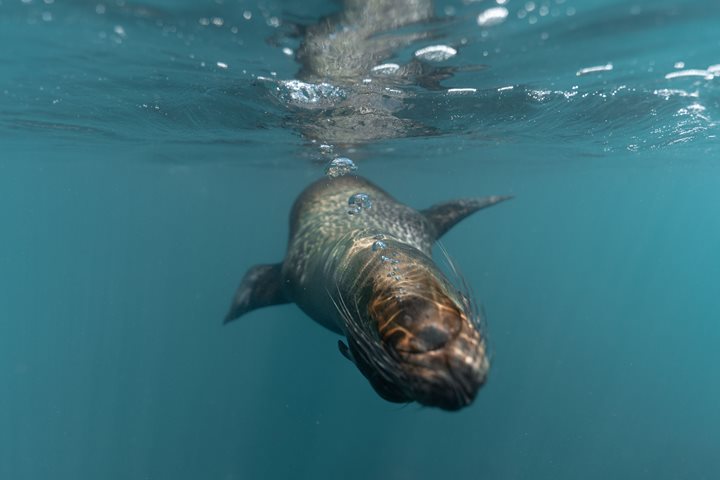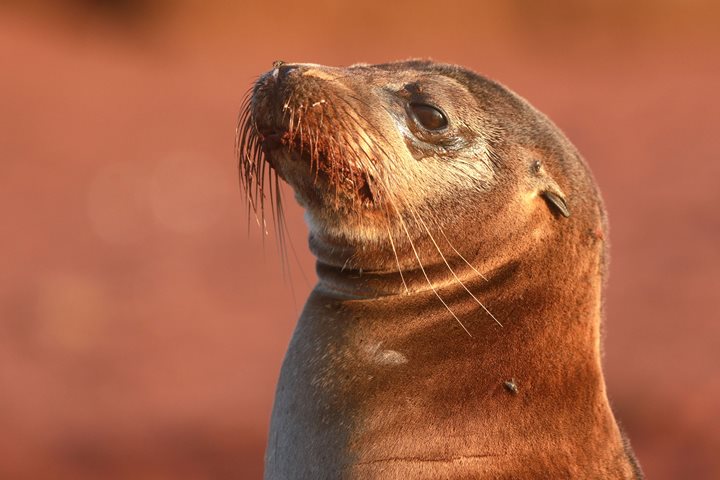It was our first full day in the Galapagos archipelago. It was our first snorkel, first penguin, first white-tipped reef shark, first hammerhead shark, first lobsters in the wild, first octopus, first sea lion underwater, first red beach, first sting rays, first flounder, and first marine turtle. It was a world of firsts in twelve hours! As a resident, as a naturalist for over 30 years here, I get to stay in the islands and watch again and again these marvelous landscapes and happenings. But there is never anything quite so special as the first time.
- Daily Expedition Reports
- 08 Jan 2018
Bartholomew and Rabida Islands, 1/8/2018, National Geographic Islander
- Aboard the National Geographic Islander
- Galápagos
Cindy Manning, Expedition Leader
Cindy was raised in a family that was fortunate enough to live in many different countries across the globe. During her formative years, she counted Latin America and Europe as home, with periods in-between living in Illinois and Indiana, where she a...
Read MoreShare Report
Related Reports
11/23/2022
Read
National Geographic Islander II
Isabela and Fernandina
Our day began with the chance to point out a lot of interesting geological features as we enjoyed Zodiac tours along a massive flank of Ecuador Volcano on Punta Vicente Roca. In the afternoon, we took a sunny walk on Punta Espinoza on Fernandina Island. We spotted many iguanas, and a bunch of sea lions hanging around, too.
11/22/2022
Read
National Geographic Islander II
North Seymour & Rabida Islands
Relatively small and low compared to neighboring Santa Cruz, North Seymour is located to the north of Baltra. The island is dry with predominantly low shrubs, like prickly pear cacti. The incense trees are bare during the dry season. Seabirds like frigatebirds and blue-footed boobies nest on the island, and sea lions rest on the sand when they are not fishing. Land and marine iguanas also live here. Rabida is in the middle of the archipelago and has a striking red sand beach. We observed a small colony of sea lions of all ages resting or nursing. Behind the beach, American flamingos nest in a brackish lagoon. This island is full of contrasts and wildlife that we enjoyed observing during this day of expedition.







